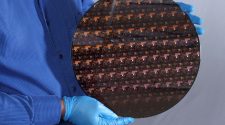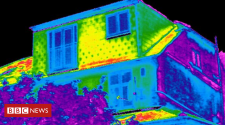Technology, WiFi connectivity and access to devices are among the biggest challenges facing the Santa Barbara Unified School District as it transitions to remote education during the coronavirus/COVID-19 pandemic.
Todd Ryckman, chief educational technology officer for the district, said it is working quickly to help students learn from home, but some barriers remain.
“Our main concerns right now are really around connectivity,” Ryckman said at Tuesday’s school board meeting. “We put over 300 families in contact with Cox, and they are in the process of getting Cox Internet at home.”
For now, the WiFi is free for up to two months, but families still must engage with Cox to install the technology and access. Ryckman also said the district has 500 physical WiFi hotspots on order that should arrive sometime next week.
The district has handed out iPads to students, even before the COVID-19 pandemic. Gov. Gavin Newsom has ordered all schools closed through the end of the spring semester, as officials look to “flatten the curve” of the deadly coronavirus.
“Our teachers and students didn’t have to learn how to do this,” he said. “Our kiddos know how to use devices and get online and do the work. We hit the ground running.”
Board member Wendy Sims-Moten urged Ryckman to consider partnering with Computers for Families to help families if they need devices but can’t use iPads at this time.
Board member Kate Ford acknowledged that the situation is in flux, but that good things are ahead — eventually.
“I am absolutely excited, and I know education will never be the same,” Ford said.
Ryckman agreed that there could be a silver lining in this rapid transition.
“This is a horrible crisis, but in education, this is really going to move us forward in a direction we need to go,” Ryckman said.
In K-6, Raul Ramirez, assistant superintendent of elementary education, said the lower grades were still making an effort to get materieals from students’ cubbies and desks to their homes, but that it’s still a challenge.
“I wouldn’t say consistently quite yet; that is still a work in progress,” Ramirez said. “We’ve had to balance the ability to do that with, of course, safety, welfare and just following guidelines that have been set out for employees, so it’s been a very challenging balance to strike.”
Ford asked Ramirez to look into mailing classroom materials to homes. She also asked how he was tracking attendance.
“We are actively working on that,” Ramirez said. “I don’t have a percentage to quote you on that right now, but I can tell you that systems have been developed.”
Ramirez said that in some cases, families are difficult to find.
“We are finding some incidences where families have moved out of the area or families are experiencing some hardships that don’t allow them to be as engaged as we would like even in this environment, but we are accounting for every student in that and making every effort to ensure that we are connecting with families,” Ramirez said.
He acknowledged that access to technology was also a problem for the lower grades.
“We still know the needs around connectivity are deep, and we are trying to find workarounds,” Ramirez said.
— Noozhawk staff writer Joshua Molina can be reached at .(JavaScript must be enabled to view this email address). Follow Noozhawk on Twitter: @noozhawk, @NoozhawkNews and @NoozhawkBiz. Connect with Noozhawk on Facebook.

















